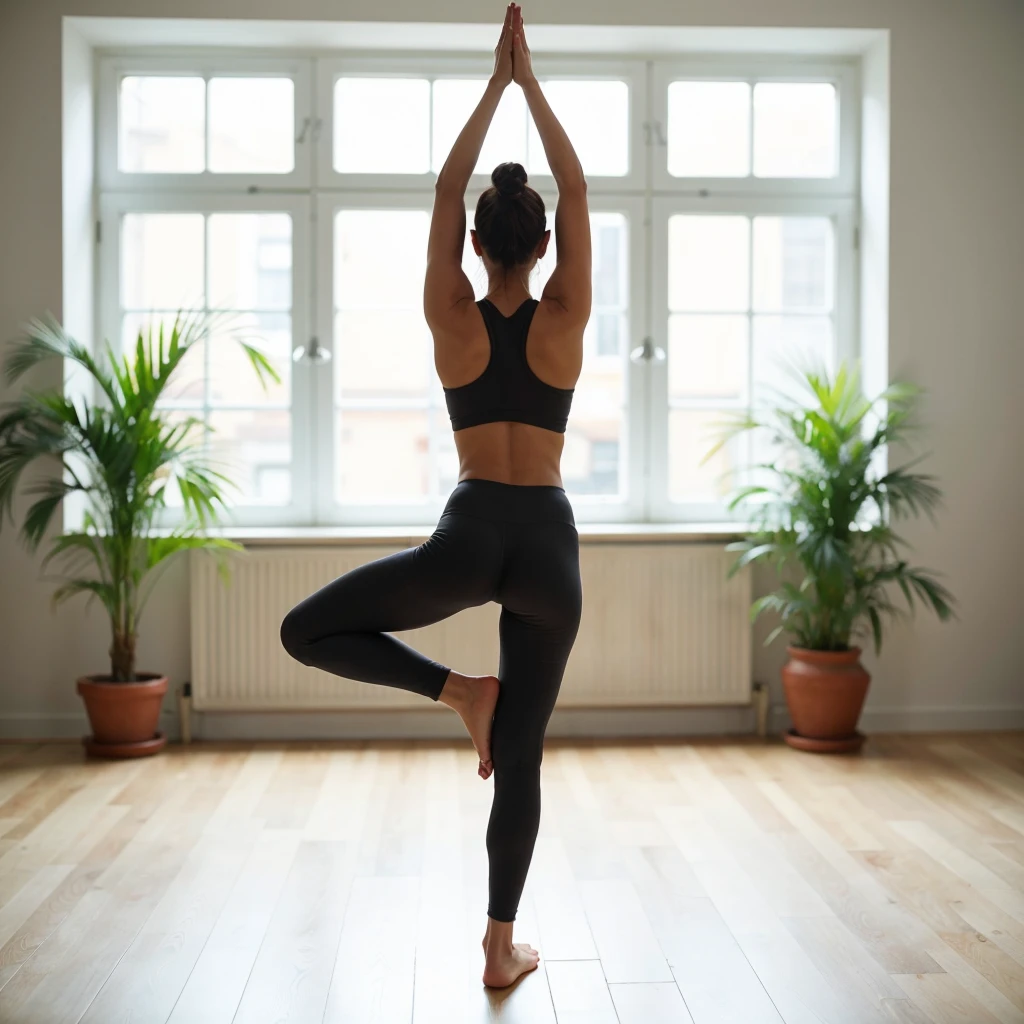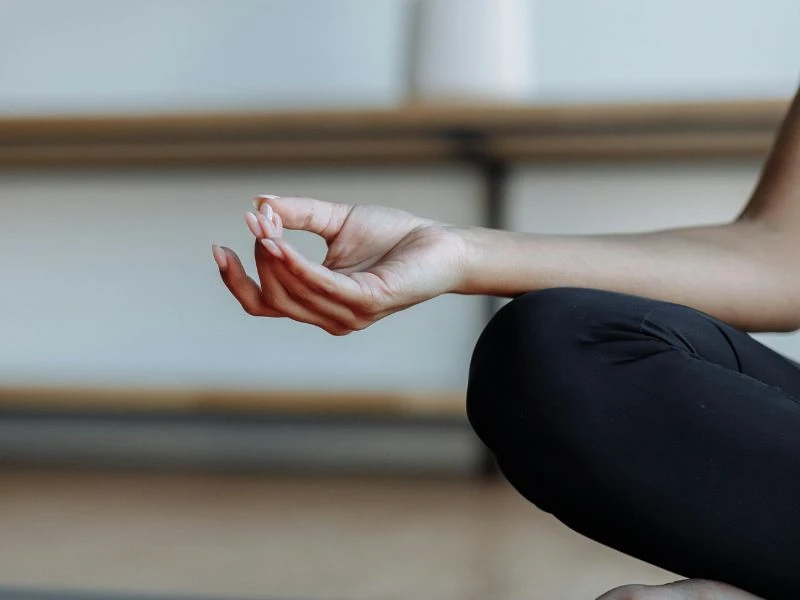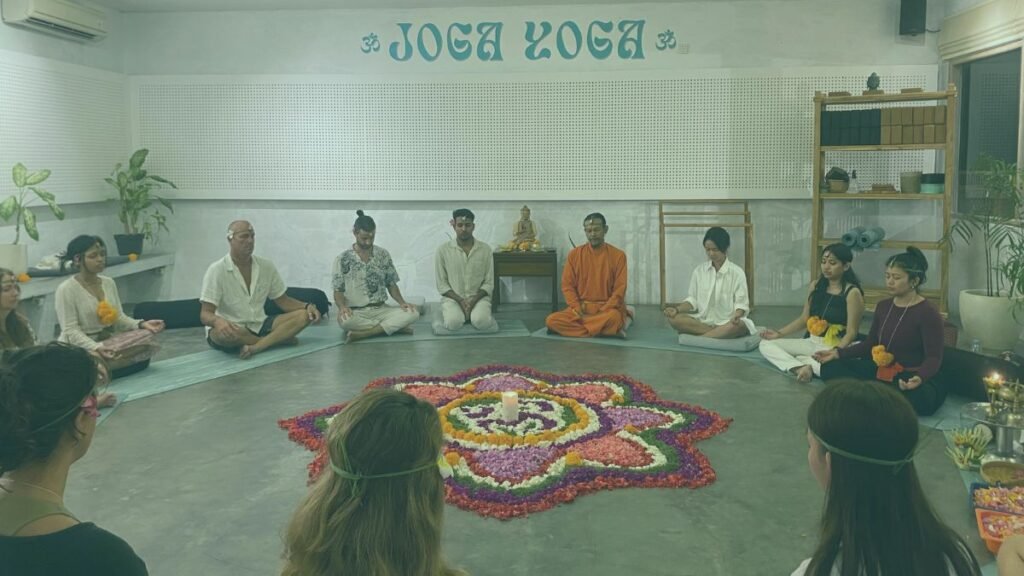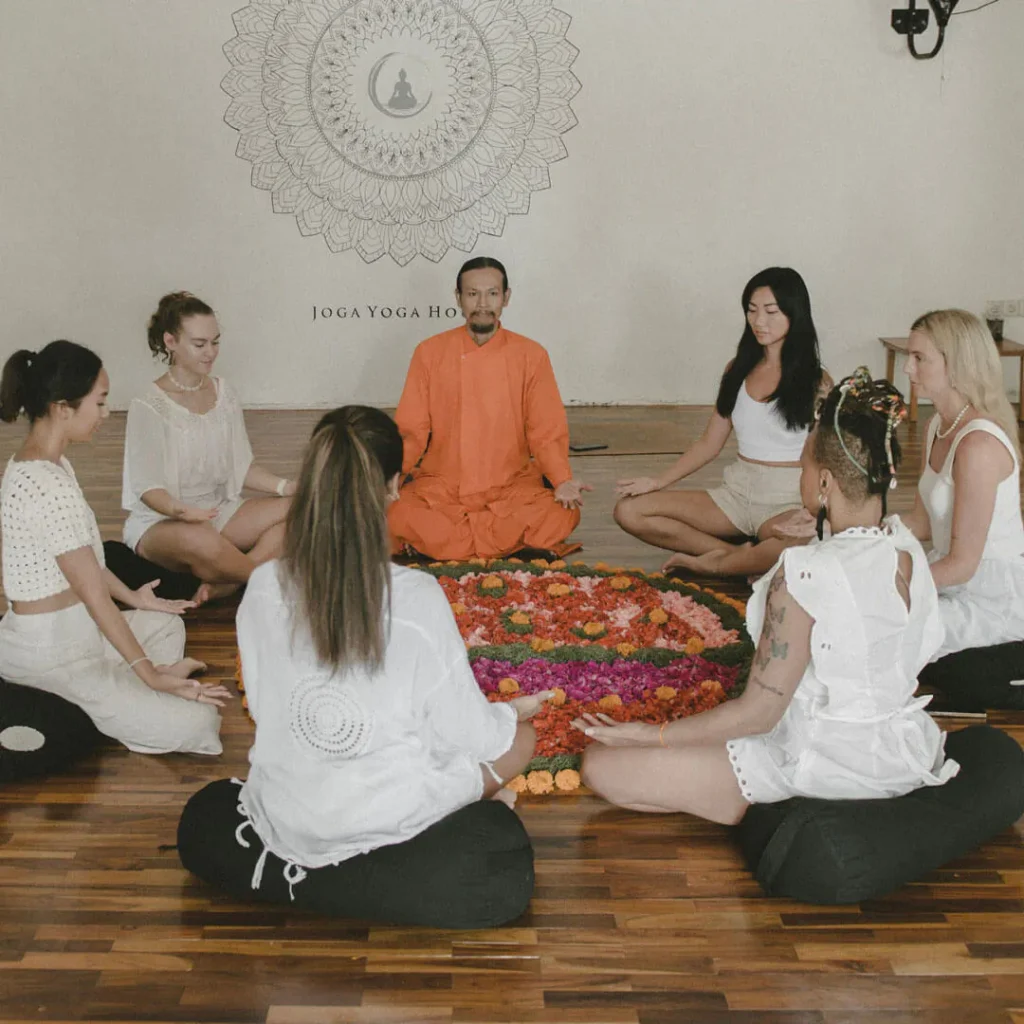Introduction to Yoga Terms
Starting yoga can feel exciting and a bit overwhelming, especially when it seems everyone speaks a different language. If you’ve ever been confused by words like “Ujjayi breath” or “Chaturanga,” you’re not alone. Yoga uses many terms from Sanskrit, one of the oldest languages in the world.
Understanding these terms can help you feel more confident and connected in your practice. This guide will explain common yoga terms you’ll hear in class, what they mean, and how they can improve your yoga experience.
Let’s explore the essential yoga terms together and make your yoga journey even more enjoyable!
Essential Yoga Terms for Beginners (A to Z)
1. Asana
- Definition: Asana means “seat” in Sanskrit, but it commonly refers to the physical postures or poses in yoga.
- Why it’s important: Asanas help improve strength, flexibility, and balance. Each pose has specific benefits and challenges.

2. Ashtanga
- Definition: A rigorous style of yoga that follows a specific sequence of postures linked with breath.
- Why it’s important: Ashtanga builds strength, flexibility, and discipline.
3. Bandha
- Definition: Bandhas are internal “locks” that control the flow of energy in the body. There are three major bandhas: Mula Bandha (pelvic floor), Uddiyana Bandha (abdomen), and Jalandhara Bandha (throat).
- Why it’s important: Engaging bandhas can enhance stability and support in various poses.
4. Bhakti
- Definition: A spiritual path in yoga focused on love and devotion.
- Why it’s important: Bhakti Yoga fosters a deep sense of connection and spiritual growth.
5. Bikram
- Definition: A style of hot yoga that follows a specific sequence of 26 poses and 2 breathing exercises in a heated room.
- Why it’s important: Practicing Bikram Yoga can improve flexibility and detoxify the body through sweating.
6. Chakra
- Definition: Chakras are energy centers in the body, from the base of the spine to the top of the head. There are seven main chakras, each associated with different physical and emotional aspects.
- Why it’s important: Balancing your chakras can promote overall well-being and harmony.
7. Chaturanga
- Definition: Chaturanga Dandasana, or four-limbed staff pose, looks like a low plank. It requires strength in the arms, shoulders, and core.
- Why it’s important: This pose builds upper body strength and prepares you for more advanced poses.

8. Core
- Definition: The core is often thought of as the abdominal muscles, but it includes muscles from the top of your head to your feet.
- Why it’s important: A strong core supports almost every yoga pose and helps prevent injuries.
9. Downward Dog (Adho Mukha Svanasana)
- Definition: Downward Dog is a common yoga pose that looks like an inverted “V.” It’s a resting and strengthening pose.
- Why it’s important: This pose stretches the back, shoulders, and hamstrings while strengthening the arms and legs.
10. Drishti
- Definition: Drishti is a focused gaze used during yoga practice to improve concentration and balance.
- Why it’s important: Focusing your gaze can help you stay present and stable, especially in balancing poses.
11. Hatha
- Definition: Hatha yoga focuses on physical postures. “Ha” means sun, and “tha” means moon, representing balance.
- Why it’s important: Hatha classes are usually slower-paced, making them great for beginners.
12. Heart Center
- Definition: Refers to the center of the chest. It can also describe the location of the heart chakra, Anahata.
- Why it’s important: Focusing on the heart center can help open the chest and promote emotional well-being.
13. Iyengar
- Definition: A style of yoga known for its emphasis on precision and alignment, often using props like blocks and straps.
- Why it’s important: Iyengar Yoga can help practitioners achieve correct alignment and prevent injuries.
14. Jalandhara Bandha
- Definition: Throat lock, one of the three major bandhas.
- Why it’s important: Helps control the flow of energy and supports breath control.
15. Kundalini
- Definition: A form of yoga that focuses on awakening energy at the base of the spine and moving it upward.
- Why it’s important: Kundalini Yoga can increase awareness and spiritual growth.
16. Mantra
- Definition: A word, sound, or phrase repeated either out loud or in the mind to increase concentration while meditating.
- Why it’s important: Using a mantra can enhance focus and bring a sense of calm.
17. Mudra
- Definition: Hand positions or gestures used during meditation and asana practice to aid concentration and connection.
- Why it’s important: Mudras can help channel energy and focus the mind.

18. Mula Bandha
- Definition: The root lock, one of the three major bandhas, located at the pelvic floor.
- Why it’s important: Engaging Mula Bandha helps stabilize the pelvis and support the spine.
19. Nadi
- Definition: Energy channels through which prana (life force) flows in the body.
- Why it’s important: Clear nadis promote better energy flow and overall health.
20. Namaste
- Definition: Roughly translates to “the light within me bows to the light within you.” It is often said at the end of a yoga class.
- Why it’s important: Saying Namaste is a gesture of respect and gratitude.
21. Om
- Definition: A mantra usually chanted at the beginning and end of yoga classes. Om represents the sound of the universe.
- Why it’s important: Chanting Om can create a sense of unity and peace.
22. Patanjali
- Definition: A sage who is believed to have compiled the Yoga Sutras, a guide on how to live a meaningful and purposeful life.
- Why it’s important: Understanding Patanjali’s teachings can deepen your yoga practice.
23. Prana
- Definition: Life energy or life force that flows through the body.
- Why it’s important: Prana is vital for health and vitality.
24. Pranayama
- Definition: Breathing exercises designed to control and enhance the flow of prana.
- Why it’s important: Pranayama can improve respiratory health, calm the mind, and boost energy.
25. Sadhana
- Definition: A daily spiritual practice or discipline.
- Why it’s important: Consistent sadhana can deepen your yoga practice and foster personal growth.
26. Sacrum
- Definition: A triangular-shaped bone at the base of the spine.
- Why it’s important: Keeping the sacrum healthy supports overall spine health.
27. Savasana
- Definition: Also known as Corpse Pose, it is a relaxation pose typically practiced at the end of a yoga class.
- Why it’s important: Savasana allows the body and mind to rest and integrate the benefits of the practice.

28. Shanti
- Definition: Means “peace” and is sometimes chanted in class.
- Why it’s important: Chanting Shanti can promote a sense of calm and tranquility.
29. Sit Bones
- Definition: Part of the pelvis, the two bony protrusions on the underside of the buttocks.
- Why it’s important: Proper alignment of the sit bones supports good posture.
30. Sternum
- Definition: Breastbone, a long, flat bone that runs vertically down the center of the chest.
- Why it’s important: Keeping the sternum lifted can improve breathing and posture.
31. Surya Namaskar
- Definition: Sun Salutations, a sequence of asanas that warm up the body.
- Why it’s important: Practicing Sun Salutations increases flexibility and strength.
32. Tailbone
- Definition: The small bone at the end of the spine.
- Why it’s important: Awareness of the tailbone helps in aligning the spine correctly.
33. Uddiyana Bandha
- Definition: Abdominal lock, one of the three major bandhas.
- Why it’s important: Helps strengthen the core and supports breath control.
34. Ujjayi
- Definition: A breathing technique also known as “victorious breath” or “ocean breath.”
- Why it’s important: Ujjayi breath helps focus the mind and increase the flow of prana.
35. Upanishad
- Definition: Ancient yogic texts that explore philosophical ideas and meditation techniques.
- Why it’s important: The teachings in the Upanishads can provide deeper insights into yoga philosophy.
36. Vinyasa
- Definition: A style of yoga where movements are linked with breath in a flowing sequence.
- Why it’s important: Vinyasa practice builds strength and flexibility while promoting mindfulness.
37. Yang Yoga
- Definition: A style of yoga that is more dynamic and active, focusing on building strength and stamina.
- Why it’s important: Yang Yoga balances the more passive Yin Yoga and enhances overall fitness.
38. Yoga
- Definition: The word “yoga” means to “yoke” or “bind,” often interpreted as “union.” It’s the practice of connecting the mind, body, and breath.
- Why it’s important: Yoga helps bring balance and harmony to your life by combining physical postures, breathing exercises, and meditation.
39. Yoga Nidra
- Definition: Also known as “yogic sleep,” a state of deep relaxation and conscious awareness.
- Why it’s important: Yoga Nidra can reduce stress and improve sleep quality.
40. Yin Yoga
- Definition: A style of yoga that involves holding poses for longer periods to stretch deep connective tissues.
- Why it’s important: Yin Yoga increases flexibility and promotes joint health.
Additional Yoga Terms and Concepts
Ahimsa
- Definition: A principle of non-violence and compassion towards all living beings.
- Why it’s important: Practicing ahimsa can help cultivate kindness and reduce harm in your thoughts, words, and actions.
Aparigraha
- Definition: Non-possessiveness or non-greed.
- Why it’s important: This concept encourages letting go of attachment to material possessions and embracing simplicity.
Dhyana
- Definition: Meditation or focused concentration.
- Why it’s important: Regular meditation practice can help calm the mind and enhance mental clarity.
Dharana
- Definition: Concentration, one-pointed focus.
- Why it’s important: Dharana is essential for developing deeper meditation practices and mindfulness.
Ishvara Pranidhana
- Definition: Surrender to a higher power or the divine.
- Why it’s important: This practice encourages humility and trust in the greater flow of life.
Kriya
- Definition: Purification techniques in yoga, often involving breath control and body movements.
- Why it’s important: Kriyas help cleanse the body and mind, preparing for deeper yoga practice.
Mudita
- Definition: Sympathetic joy or joy in the happiness and success of others.
- Why it’s important: Practicing mudita can foster positive relationships and inner contentment.
Niyama
- Definition: Observances or personal disciplines in yoga. There are five niyamas: Saucha (cleanliness), Santosha (contentment), Tapas (discipline), Svadhyaya (self-study), and Ishvara Pranidhana (surrender).
- Why it’s important: Observing the niyamas can enhance personal growth and spiritual development.
Pratyahara
- Definition: Withdrawal of the senses, turning inward.
- Why it’s important: Pratyahara helps reduce distractions and deepen meditation practice.
Samadhi
- Definition: A state of deep meditation and union with the divine.
- Why it’s important: Achieving samadhi is the ultimate goal of yoga, leading to profound peace and enlightenment.
Sankalpa
- Definition: An intention or resolve set during yoga practice.
- Why it’s important: Setting a sankalpa can guide your practice and bring clarity to your goals.
Sattva
- Definition: A quality of balance, harmony, and purity.
- Why it’s important: Cultivating sattva can lead to a more peaceful and balanced life.
Tapas
- Definition: Discipline, effort, and self-control.
- Why it’s important: Practicing tapas helps build determination and strength in your yoga practice and daily life.
Yama
- Definition: Ethical guidelines in yoga, including Ahimsa (non-violence), Satya (truthfulness), Asteya (non-stealing), Brahmacharya (moderation), and Aparigraha (non-possessiveness).
- Why it’s important: Observing the yamas promotes ethical behavior and harmony in your interactions with others.
Conclusion
Learning yoga terms can feel like learning a new language, but it’s a rewarding part of deepening your yoga practice. By familiarizing yourself with these essential and additional terms, you’ll feel more confident and connected in your classes. Remember, yoga is a journey of both the body and mind. Embrace each step with patience and curiosity.
Keep practicing regularly, ask questions when you’re unsure, and use resources like dictionaries, apps, and videos to support your learning. Join a community, set intentions, and most importantly, be kind to yourself. Your yoga practice is a personal journey, and understanding these terms will enhance your experience and growth.
Enjoy your yoga journey, and let these terms guide you to a deeper, more fulfilling practice. Namaste.






